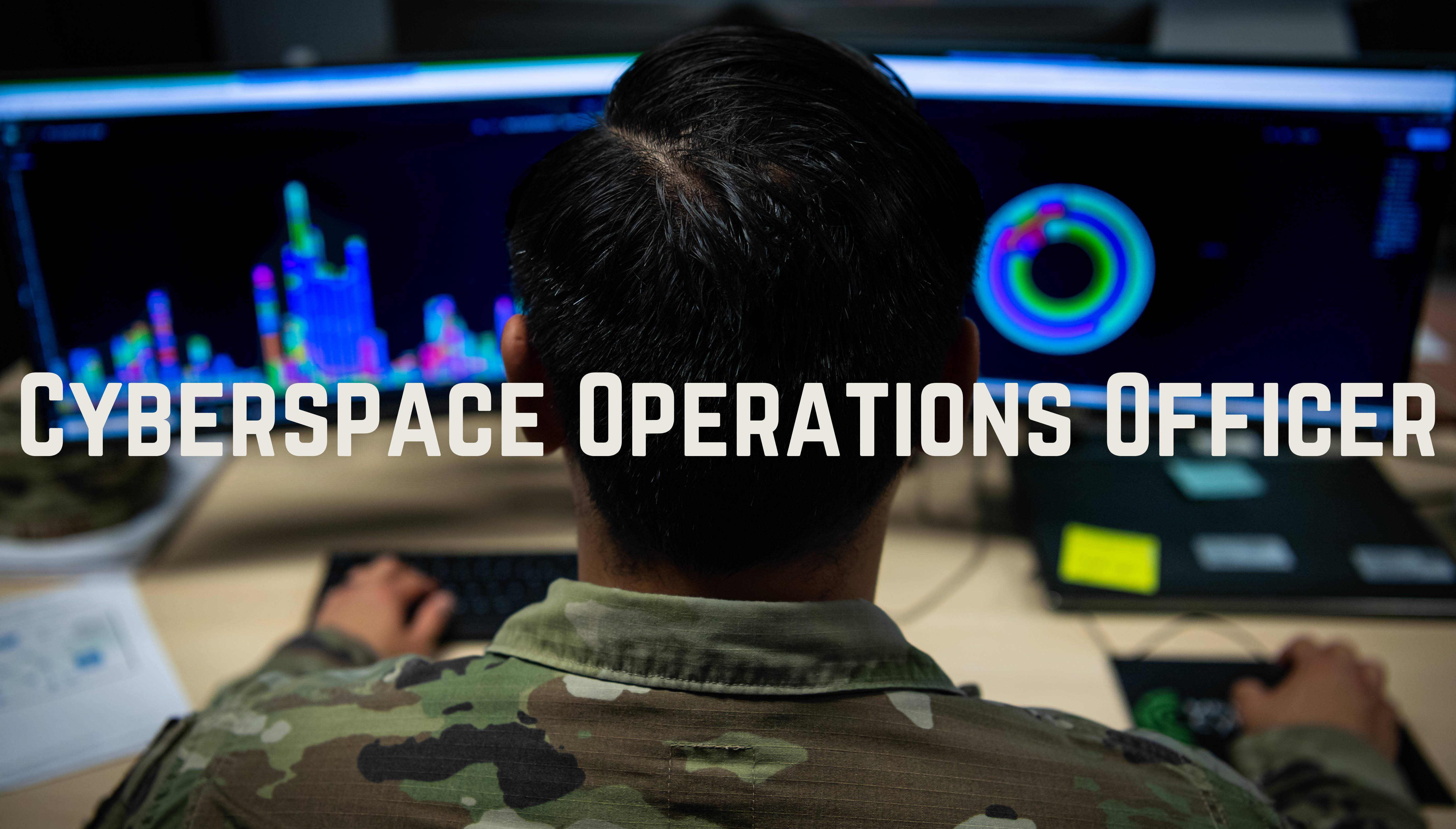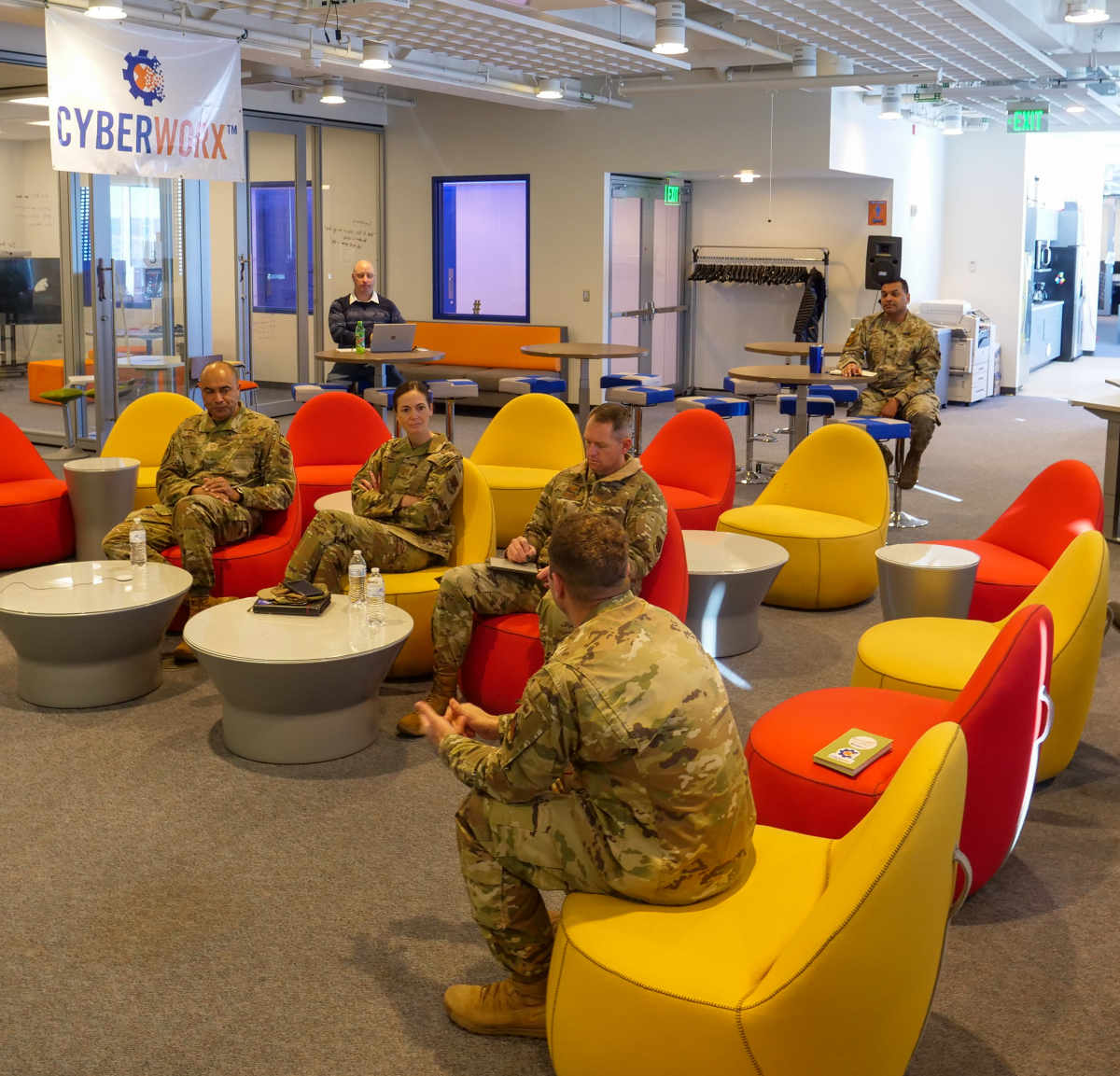
“I’m all about empowering people. How do we empower people to take ownership of their own career and do an honest assessment of where they stand?”
– Brig Gen Heather Blackwell, Director of Cyberspace & Information Dominance, HQ Air Combat Command A6
When Brig Gen Heather Blackwell spoke those words in an interview about building a successful career, you could hear her passionate concern and optimistic urgency for growing cyber officers. Her well-framed “How do we … ?” problem statement reveals an understanding that cyber career advancement depends on institutions (“empower people to take ownership”) as well as the individual cyber officer (“empower people to take ownership”).
Brig Gen Blackwell listed some essential cyber capabilities, like zero-trust architectures, cloud computing with the ability to secure it, and getting data to the tactical edge. So, yes, the Air Force needs 17-Deltas who understand data analytics. But the burden of training them is on Air Force institutions and leadership: “It is on us to hold institutions all along the way accountable for teaching our 17-Deltas those skills,” Brig Gen Blackwell told the audience at AFCEA’s 2022 Cyberspace Symposium.
Then Brig Gen Blackwell came to us. She approached the AF CyberWorx team, and together they refined the need into a more accurate problem statement:
The Cyber Officer Community lacks actionable billet information and competency-based training/information necessary to make the best talent management decisions to prepare our officers for these billets. This culminates in an underutilization of Cyber Officer talents and skills, and decreased connectivity to identify training gaps and overlaps.
The U.S. Air Force is not doing enough to prepare these specialists for future roles as chief operating officers or A6s. Why not? How can the situation get better?
With the problem now pinpointed, the AF CyberWorx team dove in with early research: 25 stakeholder/user interviews, each user with different needs. Journey mapping of a 17X officer. Analyzing previous and current efforts, and why they don’t work. Digging into a cyber officer’s goals and needs, struggles and pain points. Identifying tasks. Exploring future opportunities to shape an ideal present.
In this research, AF CyberWorx’s interview questions exhibited user-centric problem-solving. Here’s a sampling:
Can you tell us about the last time you made a decision about what training to take?
Where do you go to find out what courses to take next?
How would you want your training to be tracked?
What do you know about the Cyber Officer Assignment Process?
When was the last time you used Talent Marketplace? Tell us about that experience.

Research led to several discoveries: Cyber officers don’t know what training they need. Lieutenant Colonels, even as far along as they are in their careers, may be unaware that they’re not on track to make General officer. Tracking tools and software are difficult to navigate, and officers feel frustrated and overwhelmed. Programs and databases are disconnected. Talent Marketplace is not easily searchable and seems incomplete. Career advancement is highly dependent on individual mentors.
The next step: a three-day design sprint at the CyberWorx studios, combining the insights and expertise of military, government, and industry workshoppers. MSgt Daniel Hulter and TSgt Austin Wiggins led the way through multiple group exercises.
Thinly disguised as an icebreaker, the group first shared personal information about their backgrounds, experiences, identities, and goals. By the end of this exercise, everyone could recognize the degree of diversity in the room, consider their blind spots, see who was represented and who was missing, anticipate biases and tunnel vision, and overall prepare themselves for collaboration.
A key method throughout the design sprint was to imagine ideal future scenarios in order to shape an ideal present, using Jade Bloom and Ben Mosior’s Ideal Present Design Canvas.
The futures approach used for the workshop explored the following:
-
What do we already know about our constraints?
-
What do we need to understand about our ideal future?
-
What do we need to do to reach our desired outcome?
Another workshop method for this event used a human-centered approach which asks:
-
What do we already know about training?
-
What do we need or want to know?
-
What do we need to change to reach our desired outcome?
Human-centered design means understanding:
-
Pain points experienced in this domain.
-
Anchors holding us down from progress.
-
Collective requirements that need definition.
Recommendations emerged after the workshop, which further distilled into calls to action in three areas:
-
Properly defined billets.
-
Effective talent vectoring
-
Coherent training pipeline
Properly Defined Billets
Since 2018, USAF has been trying to achieve the congressionally mandated reporting, using the Department of Defense (DoD) Cyber Workforce Framework (DCWF) codes. The goal: align Air Combat Command billets to DCWF codes so each billet contains a primary listing of knowledge, skills, assets, and tasks (KSATs).
Effective Talent Vectoring
Data must be available to guide forecasting and succession planning.
Coherent Training Pipeline
Required Air Force courses in evolving cyber technologies must also evolve, which requires reassessment training and curriculum as a whole.
In post-workshop research and continued collaboration, CyberWorx and its collaborators parsed these three directions and further analyzed and determined specific action items, implementation guidance, timelines for completion, and alternatives.
With the problem correctly defined, and with the individual cyber officer’s career placed at utmost importance, 17X officers can now proactively move forward with confidence in shaping their futures as robust cyber warfighters.
Did you find this informative? Learn more about our other projects!
